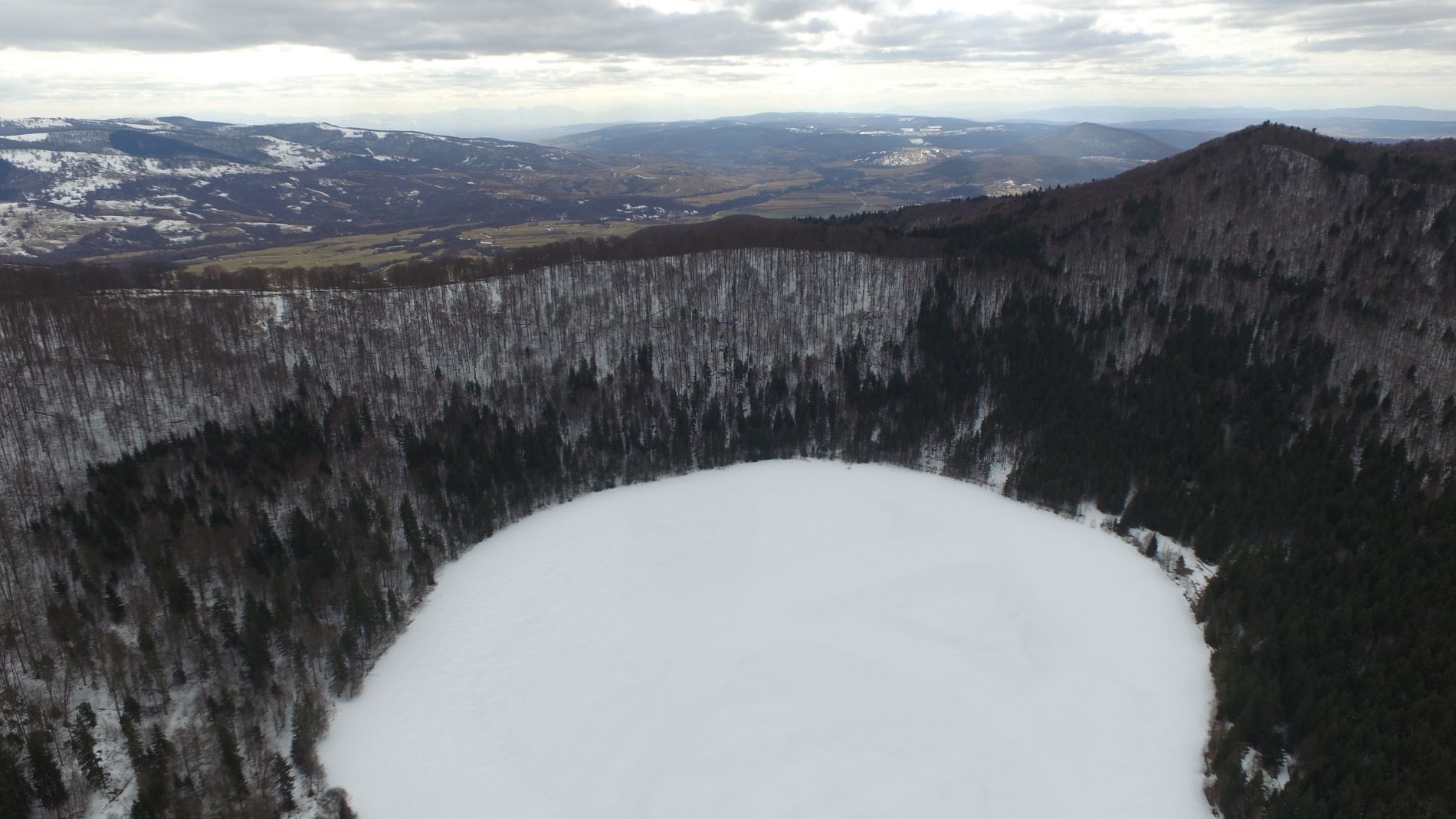
Acest geocache face parte din jocul ClimateQuest, care te va călăuzi în unele zone umede interesante din România și îți va arăta efectele schimbărilor climatice, precum și efectele intervenției umane asupra acestor habitate.
Lacul Sf. Ana este singurul lac vulcanic din Europa Centrală și de Est. Este situat într-una dintre cele două cratere din Masivul Ciomatu, iar în celălalt crater putem admira Tinovul Mohoș. Craterele fac parte din Rezervația Naturală Mohoș.
Unicitatea lacului constă în faptul că nu are izvoare, își completează apele doar prin precipitații. Ca urmare, aici s-a dezvoltat un sistem ecologic special, dar în același timp și foarte sensibil și fragil. Apa lacului se infiltrează în sol și iese în afara craterului sub formă de izvoare. Vechea legenda secuiască, care păstrează istoria formării și originea numelui, este o parte importantă a culturii transilvănene.
Acum 100-150 de ani, turiștii călătoreau să admire apa albastră ca cerul, aproape complet transparentă și adâncă de 12 metri. Dar astăzi, ecosistemul său sensibil este amenințat de numeroși factori.
În mod natural, lacul se umple încet-încet cu resturi vegetale, dar acest proces s-a accelerat în ultima vreme datorită activității umane. În plus, adâncimea sa a scăzut semnificativ și, ca urmare, în următorii 300 de ani se poate transforma într-o mlaștină.
Din păcate, și calitatea apei se deteriorează semnificativ. Unul dintre motive este dezvoltarea masivă a algelor verzi în apă, datorită cantității imense de azot și fosfor apărută în lac, ca urmare a intensificării turismului. De asemenea, culoarea cristalină a lacului s-a schimbat în verde, reducând în mare măsură și transparența acestuia. În plus, creșterea numărului de pești populați în lac, reprezintă o amenințare considerabilă în această zonă umedă.
Ce putem face pentru a îmbunătăți calitatea apei?
- Scăldatul este interzis din 2018. Respectă această regulă!
- În timpul vizitei, utilizează numai drumul asfaltat și nu potecile din pădure. Lărgirea potecii poate contribui la eroziunea solului, iar acesta va accelera procesele de umplere al lacului.
- Folosește numai facilitățile de toaletă desemnate, prevenind astfel scurgerea a mai mult azot și fosfor în apă și împiedicând astfel amplificarea proceselor de eutrofizare.
Prezența urșilor este aproape zilnică în această zonă, ei sunt obișnuiți cu prezența oamenilor și caută hrană în coșurile de gunoi. Prin urmare, îți recomandăm să vizitezi cache-ul doar în timpul zilei și de preferat în grup, împreună cu alte persoane.
STAȚIA 1
Jocul începe aici: N 46° 7.9267 E 25° 53.765'
După ce ți-ai parcat mașina, uită-te pe harta așezată lângă căsuță.
Pentru a găsi geocache-ul, înlocuiește literele "a", "b", "c" cu numerele corespunzătoare în următoare coordonate: N 46° 7.ab0 E 25° 53.c0a . Vei găsi răspunsurile pe hartă.
a: Care este adâncimea maximă actuală a lacului? (Rotunjește numărul)
b: Caută pe hartă vârful Ciumatul Mic. Care este cea de-a patra cifră a altitudinii sale?
c: Caută pe hartă vârful Ciumatul Mare. Uită-te la înălțimea lui și adună primele două cifre.